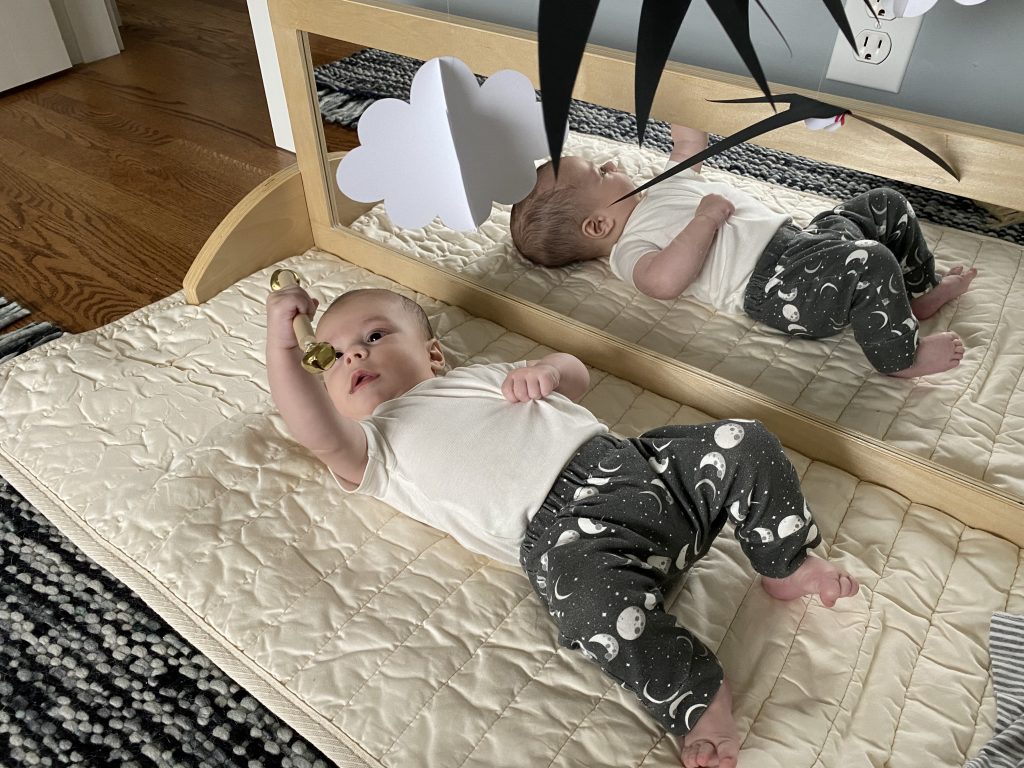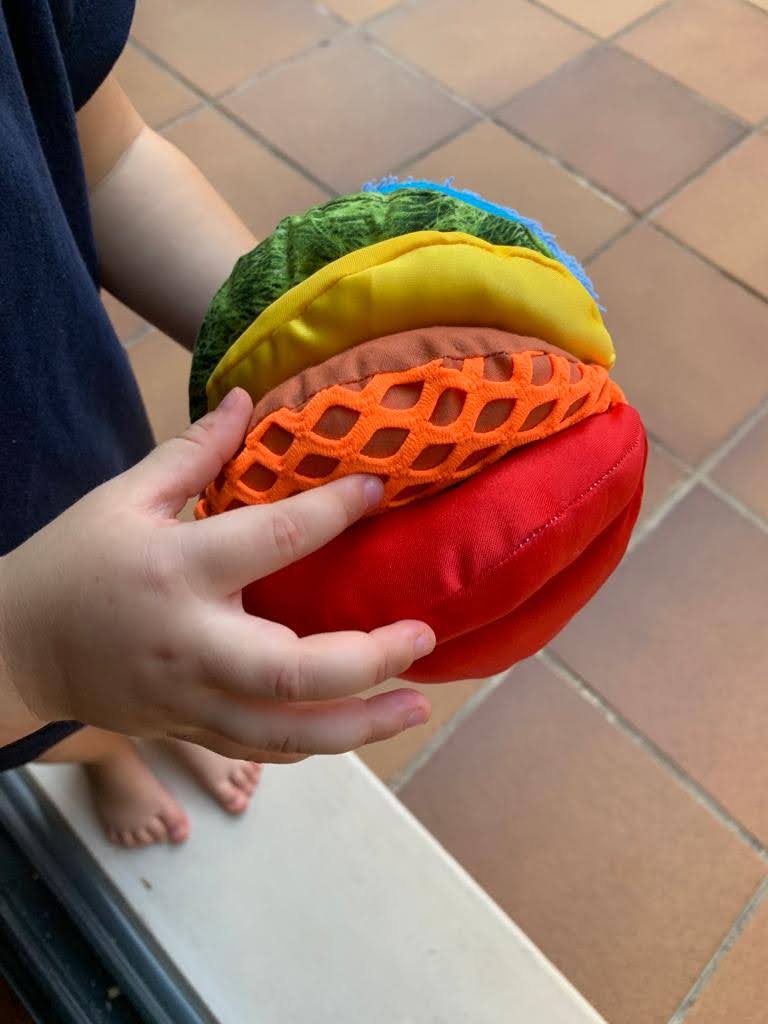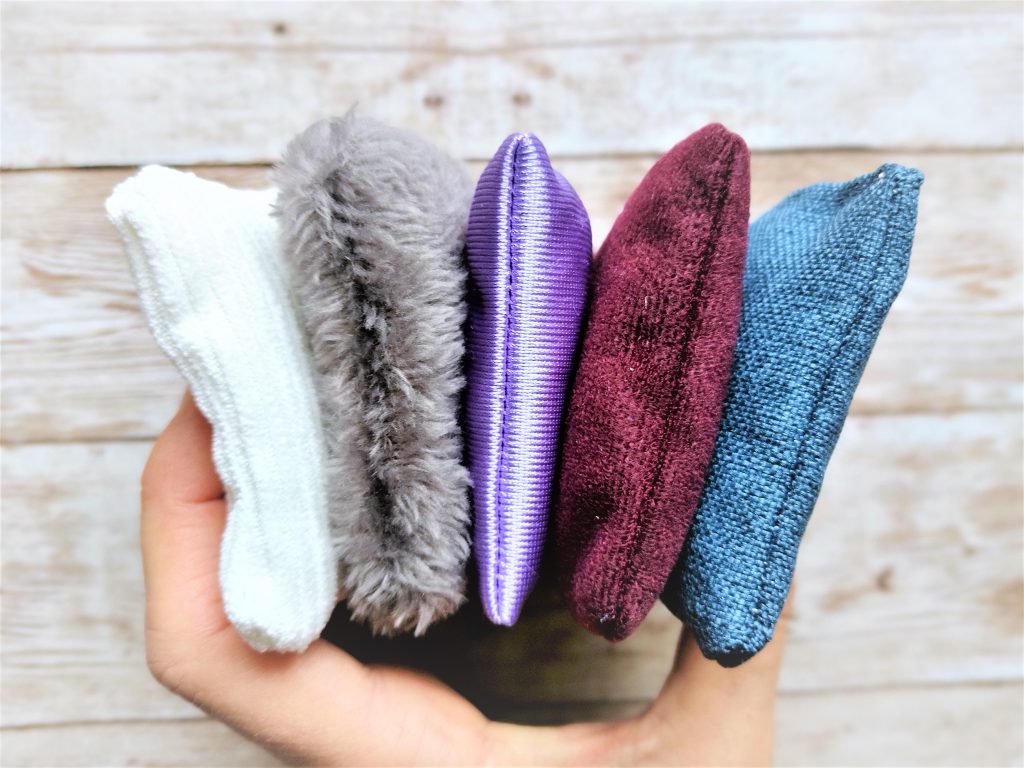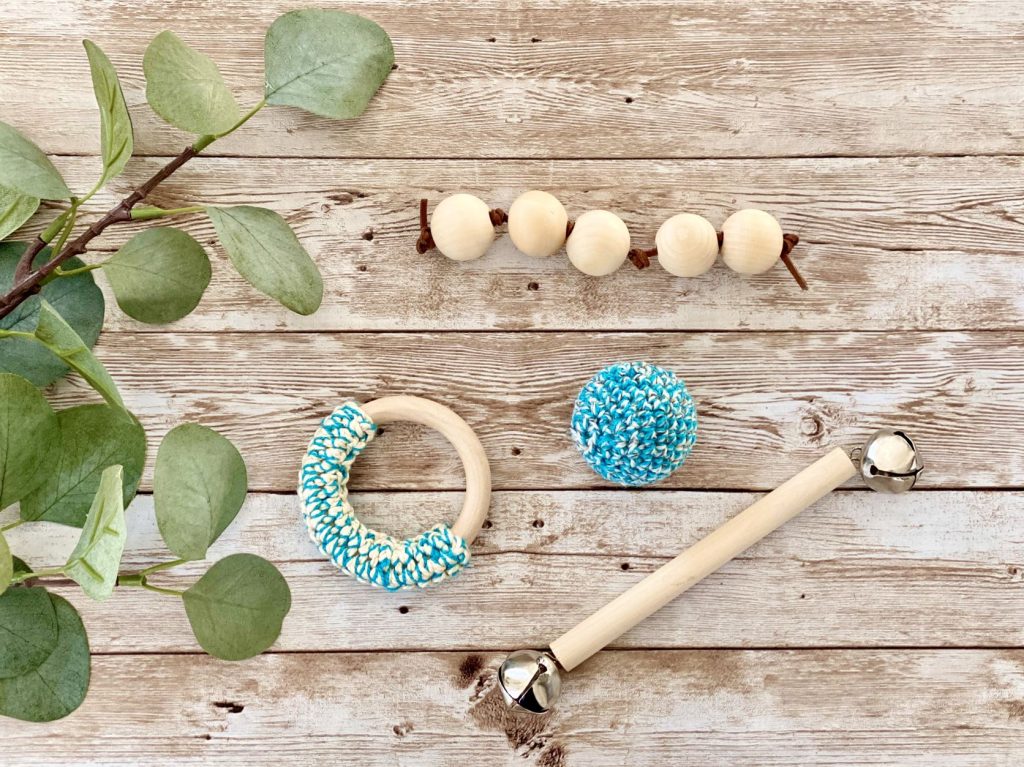When you think back on your childhood, what are the most memorable moments you remember? How do you remember them? Are they full of colour, sound, maybe they are attached to a certain smell, or a particular feeling in your body? These moments captured with your senses act as a catalyst in your brain to take you back to those times. This is the power of the senses in our body. But how does this work and why is it important when it comes to babies? Read on to learn more about the purpose and benefits of baby sensory learning.
WHAT IS SENSORY PLAY?
Even though it’s called ‘play’, I would call it ‘learning‘. It basically means any type of activity that stimulates one or more of your baby’s senses. By using their touch, taste, smell, eyes, movement and hearing, they pick up the sensory information and start processing it and categorising them in their brain.
We don’t have to think of anything complicated. What are the senses your baby uses in these following situations?
From a perspective of a few days old baby, try to imagine all the sensory input you get from, let’s say, breastfeeding, while their mummy is gazing into their eyes full of love, speaking softy to them, stroking their head.
Or here’s another one, bathtime. The perception of different temperatures inside and outside of the water. The sploshing sounds the water makes around them. The soft wash cloth sliding down on their body. The soft towel we carefully dry them with. The caregiver, who is singing or talking to them, making sure they are feeling comfortable.
As you can see, in a baby’s life, everyday activities like these provide powerful sensory stimuli for them.
WHY IS BABY SENSORY LEARNING SO IMPORTANT?
From the moment they are born, babies’ senses are in overdrive learning about their environment as much as they can in the shortest possible time. They have a physical and emotional desire to make sense of what’s happening around them. Their evolutionary design is made up so they can do exactly that by taking full advantage of all their senses.
At the time of birth, our senses are not yet fully developed. They gradually mature as we encounter more varied sensory experiences. This information is all gathered in the brain where it creates, develops and strengthens nerve connections to process and respond to it. This results in more complex learning tasks and more cognitive and overall development. This process is the most important in the first three years of a child’s life, when the brain grows at a fast rate.
Therefore, sensory learning and exposing your baby to as many varied sensory experiences as possible is crucial to brain development (read a more in-depth explanation here).
LITTLE SCIENTIST
Young children were born scientists – in the literal sense of the word. They investigate, hypothesise, come up with theories and experiment with everything they can get their hands on. It inspires discovery, creativity, problem solving, imagination and independent thinking.
WHAT ARE THE DIFFERENT TYPES OF BABY SENSORY LEARNING?
Although we were told that we have five senses, we actually have seven! Let’s look at all of them and see how we can stimulate them.
Tactile learning
Tactile learning is everything to do with the sense of touch. When it comes to babies, we are talking about the ability to reach, bat, grab and hold an object. Later this will turn into passing from one hand to another, passing from hand to mouth. Even later to pulling, shaking, rolling, pinching, throwing…you name it! It is all to do with developing fine motor skills and strengthening the muscles in the body.

Teething Rings are both safe and natural sensory toys
Auditory learning
In my opinion, this type of baby sensory play is the most underrated when it comes to babies. While it is a well-known fact that they don’t like loud, sudden noise, it does not mean that we can’t offer them anything else! Experiment with different sounds and see how your little one reacts.

Visual learning
This is the least developed sense at the time of birth. While a few days old baby can only see the world in black and white (read more about high-contrast resources here), a three-month-old baby can already distinguish the colours AND different hues.

Olfactory learning
Have you noticed that as soon as you step into the room, your baby calls you, even though they can’t see you? It’s probably because s/he can smell your milk (if you’re breastfeeding, of course). Tiny babies’ sense of smell is already quite well developed when born, that’s one of the reason why they can so easily find the nipple, even when their eyes are closed.
Gustatory sensory learning
Babies’ sense of taste is also quite mature from the first days. They can taste the difference in your milk, or when suddenly, instead of your milk, they receive formula. You can capitalise on this during weaning by doing Baby Led Weaning.
Body awareness (proprioception)
Proprioception starts developing in our womb and goes hand in hand with the tactile sense. It’s like learning how to build a mental map your own body. With babies, this sense can be assisted by giving them a massage, doing baby yoga with them, allowing them to use their feet without shoes and letting them lie in different positions (tummy time or side lying position).

Vestibular sensory learning
There’s this tiny organ in our ear that helps us to understand where we are in space. In your baby’s case, this might mean up or down, on their tummy or on their back, maybe lying on their side… This sense is the vestibular system and it is important so that we learn to balance and to make our movements smooth. It can be assisted by any kind of motion, for example rolling on an exercise ball, swinging, rocking, spinning or dancing. All these have to be done gently, of course.
IDEAS FOR SENSORY LEARNING
Here are a few inexpensive ideas to promote baby sensory learning in your home.
Look around your house…
… and see what you can offer to your baby to explore. This can be anything, from a teaspoon to a small comb or a paper towel roll. Make sure that they are safe to play with. Throw them all in a basket for Treasure Basket Play.

Make a sensory bottle
Nothing too complicated! Grab a see-through plastic bottle, put some water in it, maybe add a few drops of food colouring and a bit of glitter and that’s it! You can also put rice or lentils in it to make a ‘loud’ bottle.
If your baby is very small, use a bigger bottle, hold it in front of your little one’s face and dip it on one side, then on the other. You can use it during tummy time as well, slowly rolling it in front of your baby.
If you’re ready to make something more interesting, look around the internet, there are millions of great ideas to choose from.
Sensory feet
This is a great baby sensory play idea! Grab a shoebox, crunch up some tissue paper (maybe the one the shoe was wrapped in) and stick it at the bottom of the box. When your baby is alert and ready to play, hold it to their feet so they can kick into the tissue paper.
Use your creativity to come up with other things to put in the shoebox. You can even put warm water in a shallow bowl and let your baby splash around it in it.
Outside
When outside, let them feel the soil, grass or sand. This is great to do during tummy time. You can also put them on your lap and let those little feet have some sensory time, too.
FINAL THOUGHTS
Babies were born with the need to engage in sensory learning. It does not only help them to understand and make sense of their environment but is also essential to building connections in their brain. The experiences they gather during the first three years of their life will have a long-lasting effect on their future. It’s up to us to stimulate these senses and enriching the environment with a wide variety of sensory experiences for our baby. I hope I was able to give you a couple of ideas so you can get started. The rest is up to you!
Click here to read more about how the Montessori Visual Mobiles and the Montessori Tactile Mobiles help your baby’s development.
Have you tried any of the above mentioned ideas? Share them with us in the comments section or tag me in your Instagram photos. #montessoriedited, @montessoriedited
